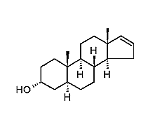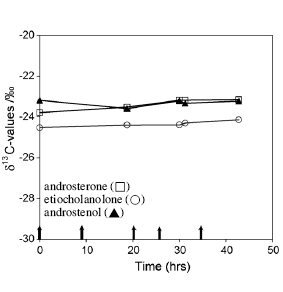|
Definition: "An ergogenic aid is any substance or phenomenon that enhances performance "
|
|
||||||||
14.11.2008 |
|
|
Tribulus components don't convert to testosterone
Supplements based on the Tribulus terrestris plant do not contain testosterone precursors. Nor do they raise the body's testosterone production. Doping hunters at the University of Lausanne in Switzerland were convinced of this after doing tests with Tribestan, a Tribulus product.
Study
The athletes that were caught attributed the positive results of the doping test to the Tribulus supplements they were using. These contain the furostanol protodioscin, which is related to cholesterol.
This substance, claim supplements manufacturers, is converted into testosterone in the body. But according to organic chemists, the human body does not contain any of the enzymes needed to do this conversion. So far research has proved the organic chemists right. In human tests, Tribulus does not raise the testosterone level. [J Ethnopharmacol. 2005 Oct 3;101(1-3):319-23.] If you give weight trainers Tribulus their performance does not improve. [Int J Sport Nutr Exerc Metab. 2000 Jun;10(2):208-15.] A recent study on the performance-enhancing effects of Tribulus found no evidence to support this either. [J Strength Cond Res. 2007 May;21(2):348-53.]
But the doping analysts in Lausanne were not interested in performance enhancement. The only thing they wanted to know was whether Tribulus can show up positive in a drugs test. So they gave two female athletes Tribestan for two consecutive days. Tribestan is the Tribulus supplement manufactured by Sopharma, the first company to launch Tribulus on the market. The athletes were given a five hundred mg dose three times a day.
Results
The idea was that protodioscin converts into testosterone metabolites, such as androsterone, androstenol or etiocholanolone.
Androstenol is the steroid shown below. Androstenol is a pheromone, and is a metabolite of androstenone.
Athletes that test positive are going to have to think up a new excuse.
Sources:
|
|







